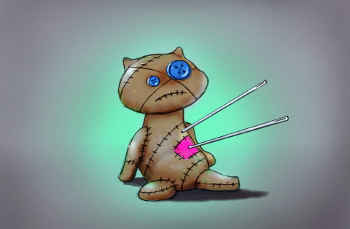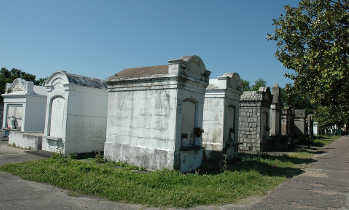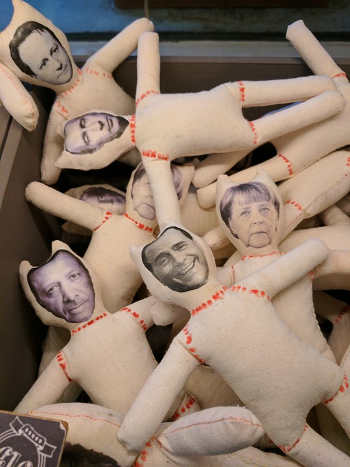
You’ve probably seen voodoo portrayed in all kinds of movies and popular media. But what is it exactly? A religion, a type of witchcraft, or something else?
Is voodoo a religion? Yes, voodoo is a complex religion that incorporates various beliefs from African, Catholic, and Native American belief systems. It has a hierarchy of different gods and spirits, a system of clergy, and other parts that normally make up a religious system.
In this article, I’ll explain exactly what voodoo is and where it comes from. You’ll learn what voodoo actually teaches, as well as where it gets its bad reputation. And I’ll clear up some misconceptions when it comes to things like voodoo dolls and zombies that aren’t actually a part of voodoo in reality.
What Is Voodoo?
When you hear the word voodoo, what kind of thoughts or images appear in your mind in your mind? Really stop to think for a minute.
You most likely think of voodoo dolls, witch doctors, and zombies. Maybe slaughtering live chickens and spitting rum everywhere. While there is a sliver of truth to some of these, they are extremely exaggerated versions of what voodoo is in reality.
Where did this imagery come from for you? These ideas are largely influenced by how you’ve seen voodoo portrayed in movies, television, books, and other forms of media. And they have little basis in the actual practices and religion of voodoo.
Despite what the media tells us, voodoo practitioners aren’t evil sorcerers or witch doctors. Voodoo isn’t a practice of devil worship or black magic. And most followers of voodoo have never heard of zombies or voodoo dolls except through popular media.
Like most religions, there is also a lot of variation in how voodoo is practiced. Just like in Christianity, you have everything ranging from evangelicals to catholics. Voodoo is the same, and not everybody agrees on how it should be practiced.
Ultimately, voodoo can be thought of a mix between catholic, native American, and African belief systems and traditions.

Where Does Voodoo Come From?
Voodoo is a religion that can ultimately trace its roots back to Africa. Similarities can be seen between voodoo and other religions that originated from Africa like palo mayombe and santeria. But each has their own distinct beliefs and customs.
The Caribbean is where voodoo is strongest and most established, with an especially strong emphasis on Haiti.
Today, voodoo is practiced all around the world. Although it can be hard to get an accurate idea of exactly how many practitioners there are.
Haitian vs American Voodoo
Haitian voodoo or vodoun in my opinion is much more in touch with the roots of what voodoo was originally about. It’s much more community-based and practices are done as a group. In fact, in Haiti it’s not really believed that you can be a solo practitioner of voodoo, and much of the practice relies on the group.
Voodoo as it’s practiced in New Orleans and Louisiana is sometimes called hoodoo. It was made popular and became differentiated through the works of people like Marie Laveau.
In my opinion, this New Orleans style of voodoo is a lot more focused on the individual. The emphasis is on seeing a voodoo practitioner who can sell you magic spells, potions, and do rituals for you. It takes the power away from the individual and turns voodoo into more of a commercial venture. I think of it more like going to see a psychic or tarot reader as opposed to the more “original” form of voodoo.
That’s not necessarily to say that one is better or worse than the other. Louisiana-style voodoo has more of a place in folk medicine and practical matters in my eyes, whereas Haitian voodoo is more about making an appeal directly to the gods.

What Does Voodoo Teach?
Those who follow voodoo believe in a supreme creator god. This god doesn’t interfere with the world since it was created. Instead, humans interact with the supernatural world through loa. These are spirits that serve the main god, which is known as Bon Dieu (French for “good God”) or Bondye. These loa are kind of like saints in Catholicism, and they can be prayed to and asked for favors.
Believers in voodoo believe there is a physical world that’s visible to us, as well as a spiritual world that can interact with us, but is invisible. When we die, we go to the invisible spirit world. Most voodoo practitioners believe that our ancestors are still watching over us in spirit and can be interacted with.
If you want a more in-depth look at what voodoo teaches, check out my other article Voodoo Loa. The Beliefs, Magic, Gods, and Spirits of Haiti.
Who Are The Clergy In Voodoo?
Voodoo practitioners who commit to the spiritual path can become ordained clergy members. Male voodoo priests are called houngan, whereas female voodoo priestesses are called mambos.
These clergy can provide guidance and help followers down their spiritual path. Although voodoo also teaches that everyone is responsible for their own spiritual path, there’s also a strong emphasis on support and community too.
Is Voodoo Moral?
Voodoo has a strong moral code that helps followers distinguish from right and wrong. The religion puts a particular emphasis on reducing greed and dishonor. As mentioned, there is also a lot of emphasis on community support and love too.
There is no central authority like a pope in voodoo. So there is some variation on what people believe from one area to the next. Each houngan or mambo is the leader of their own group and ultimate authority.
Where Did Voodoo Get Its Bad Reputation?
Religions have a long history of contorting their followers into believing that other faiths are misguided, sinful, or devil-worshippers. The word “demonize” literally comes from the idea that early Christians and Jews would portray local gods as demons when they took over a city or region. Some names associated today with demons like Baal or Beelzebub were once the names of middle-eastern gods whose religions were largely wiped out through conquest.
Do even Satanists really worship the evil? Check out my article Do Satanists Worship The Devil? To find out!
The same is true of voodoo. The whole religion is in some ways, an attempt to veil ancient African beliefs under the guise of Catholicism. This was done during slavery in North America so that slaves could hide their old beliefs from slave owners.
Since voodoo had to be largely hidden by its followers from the outside world, it’s understandable that some mystery and rumors began to build up around it. Just like exists for some other somewhat-secret practices of today like Freemasonry.
Obviously racism also plays some part, and the people in charge of Haiti largely used propaganda to portray voodoo as a bloody and primitive practice.
There were admittedly a few bad events in voodoo’s past. In 1864, a group of voodoo devotees was put on trial for the murder and cannibalization of a woman. People largely took this as a sign of the evil nature of voodoo, and a few isolated incidences like this have led to the belief that voodoo has ties with cannibalism, satanism, and similar practices. But just like the Spanish inquisition isn’t an accurate representation of Christianity, I don’t think voodoo should be judged on how a few small groups of people chose to use it.
Over time, voodoo has become more and more sensationalized in movies and other media. Nowadays, voodoo is more based on old movies about voodoo than actual voodoo itself. So we have a very warped and distorted view of what voodoo actually is.
Even today in Haiti, many voodooists are worried about how they will be viewed because of their religion, and many still choose to keep their beliefs a secret even today.
Where Does The Idea of Voodoo Zombies Come From?
The idea of zombies is also partially based on fact, but isn’t an ordinary part of voodoo. Sorcerers in rural Haiti have been known to “zombify” people by administering various plants and chemicals, such as the poison from a blowfish.
These sorcerers would essentially administer drugs to a person that would put them into a coma. Their breathing and heart rate would slow down to the point that they would appear dead. So families would bury them, and then they would be dug up by the sorcerer days later still alive.
This practice may have resulted in permanent brain damage or other complications in many victims, which leads to the portrayal of a slow brain-dead zombie. Sadly, many of these zombies are believed to have then been kept as slaves by the sorcerers and used for their own labor and devices.
However, this practice has no real connection to voodoo except that both occur in Haiti. Voodoo doesn’t condone or practice any kind of zombification.
Looking to get more in touch with the spirit world? Check out my article Talking To Ghosts: How To Communicate With Spirits of The Dead to learn more.
What About Voodoo Dolls?

The idea of sticking pins into dolls or otherwise damaging them to harm an enemy is a real practice that goes back thousands of years. This is a type of folk magic that originates from Central and West Africa, where it’s more commonly known as poppet magic.
Any type of object that’s used to take the place of someone or something else in a spell can be seen as a poppet.
So poppet magic and voodoo originate from the same area in Africa. And indeed, some people who practice voodoo may also practice poppet magic. Particularly those who follow hoodoo, or New Orleans style voodoo. But voodoo doesn’t specifically make use of or teach the use of these “voodoo dolls” itself.
Conclusion
Even today, voodoo is a very misunderstood and under-studied religion. Practitioners of voodoo get accused of all kinds of terrible things like cannibalism, devil worship, and creating zombies which have nothing to actually do with the religion in fact.
So I would encourage you to study voodoo for yourself if you’re interested, and don’t necessarily take what popular media portrays the religion to be as gospel.
For a more unbiased look into the nature and beliefs of voodoo, I’d recommend checking out this book (Amazon link) to get a more in-depth understanding.